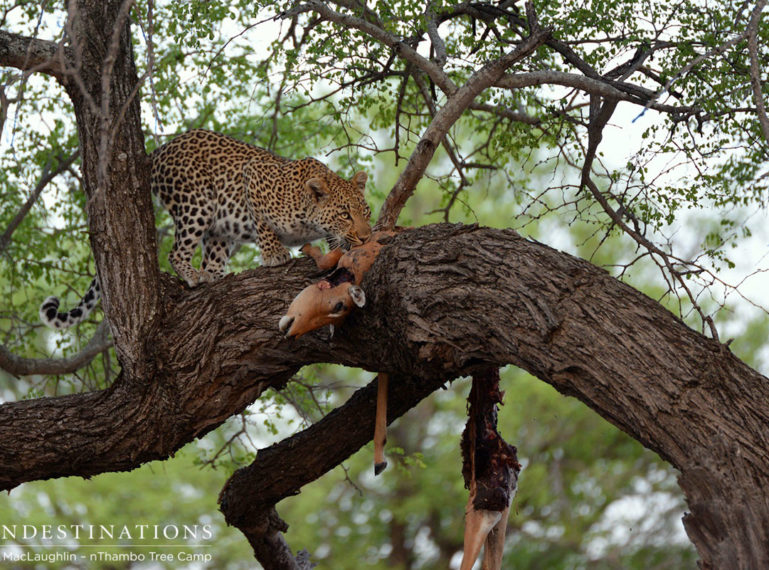
“While we were out game drive we noticed an abandoned leopard kill nestled in the fork of the tree. In that moment we knew that our rosette patterned cats would re-appear to continue their feast. It was just a matter of time. We had no idea which of our leopards made the kill, but we waited it out and our efforts were rewarded! We did a bit of our own stalking and eventually the shy Panthera pardus revealed itself” – Kevin MacLaughlin, Africa on Foot
A couple of days ago a bloody impala carcass was seen draped over branch. The freshly butchered impala met its untimely death at the hands of Rhulani, a leopard commonly seen on the nThambo Tree Camp and Africa on Foot traverse. The carcass wasn’t fully stripped of meat and was stashed in a safe place, out of the way of eager scavengers and predators looking for an easy meal. These were clear indications that Rhulani would come back to devour the rest of her meal.
All it took was a bit of perseverance and patience on behalf of the rangers. And it paid off – they were able to deliver incredible leopard sightings to their guests. The kill was seen first and when Rhulani returned, we were able to identify her. However, she wasn’t alone…her cub was was with her! The cub is still quite shy and is not as oblivious to vehicles as Rhulani is; but she will eventually get used to the presence of the game viewers.
The walkers from Africa on Foot saw the leopards again this morning again. This means we’ve enjoyed two consecutive days of leopard sightings. Leopards get most of their moisture from the meat they eat but if water sources are readily available, they will drink. The kill happened close to Buffeldam so both mom and cub have been spotted lapping up water from the edge of the dam.
So, why do we consider leopards elusive if Rhulani and cub have remained in the same spot for two days? Leopards do not devour their kill in one day and will return to their kill over a span of few days or until the carcass is eaten. When a kill is made they require a few days of undisturbed feeding. The tree stashing habits of leopards protect the carcass from thieving lions and cheeky hyenas. Leopards are far more agile than scavengers and other big cats, so they can afford to make their meal last for a few days. When we see a fresh carcass dripping with meaty morsels, we know that a leopard is likely to return to the area. This always allows us a good few days of sightings before our stealthy cat is absorbed into oblivion!
A leopardess, a cub and a kill – just another average day in the Klaserie Private Nature Reserve !
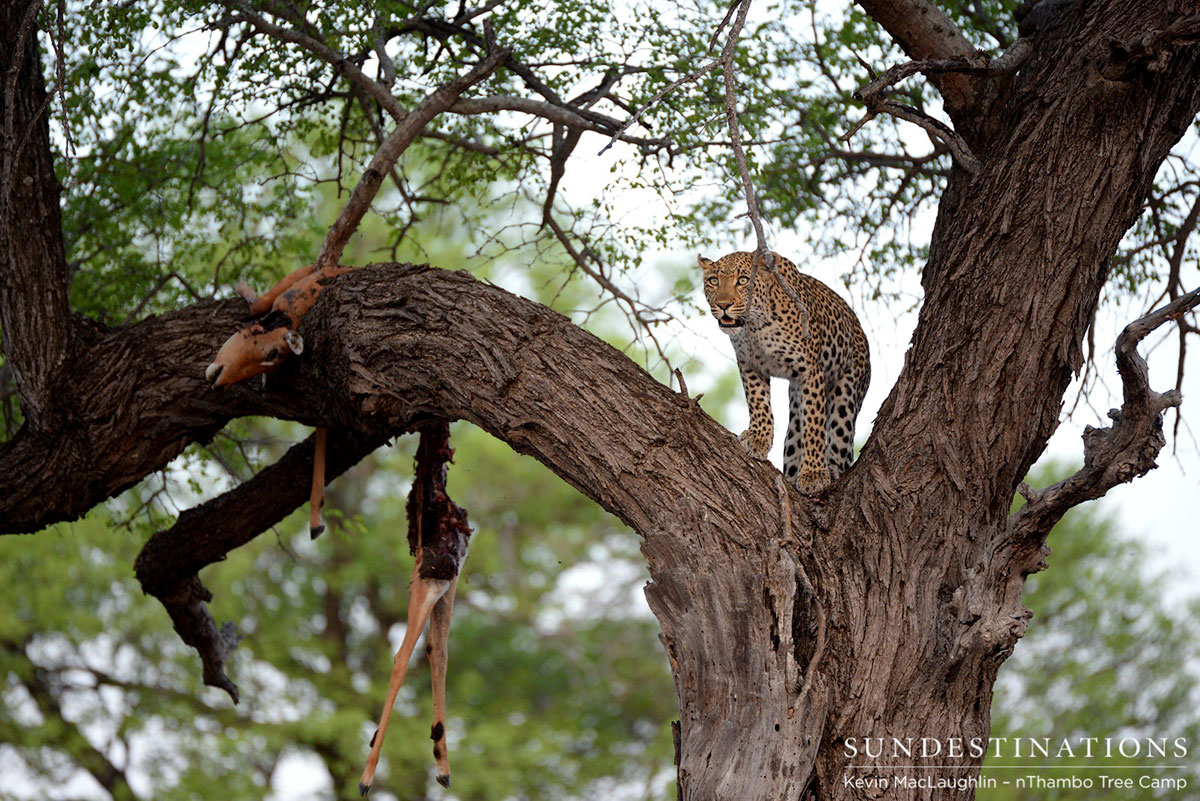
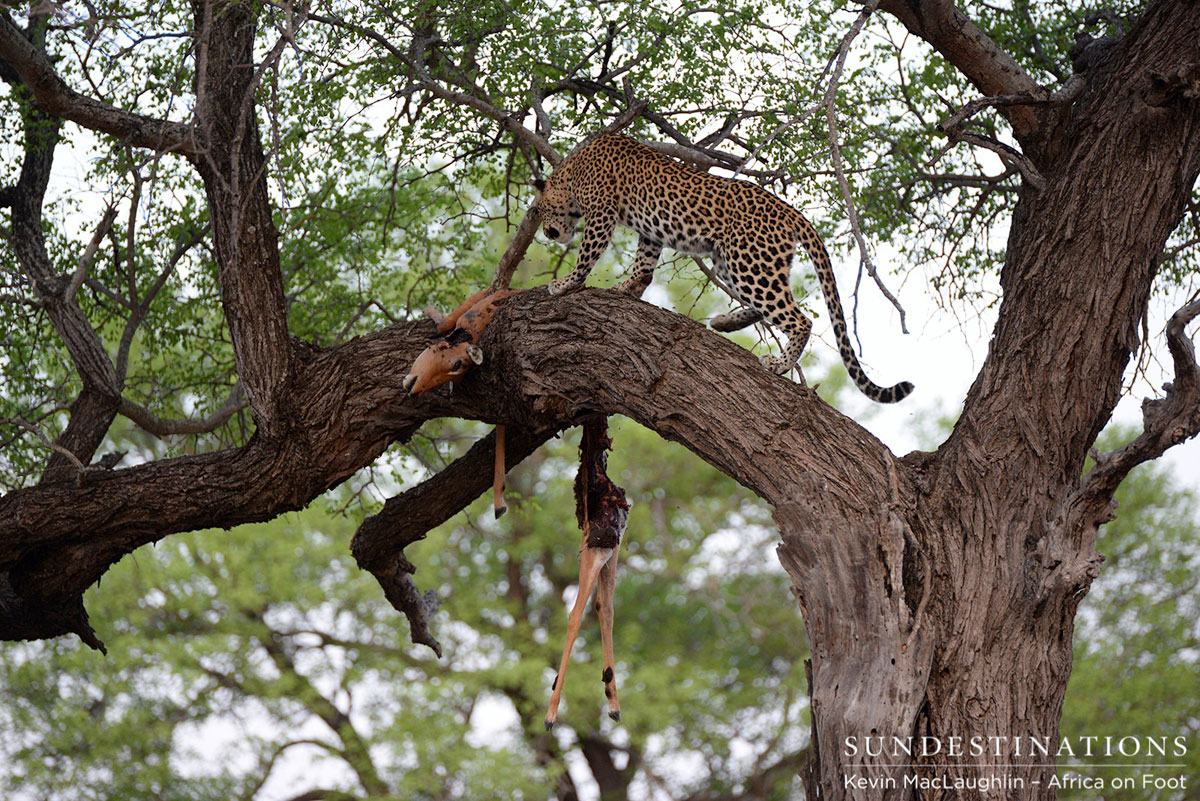
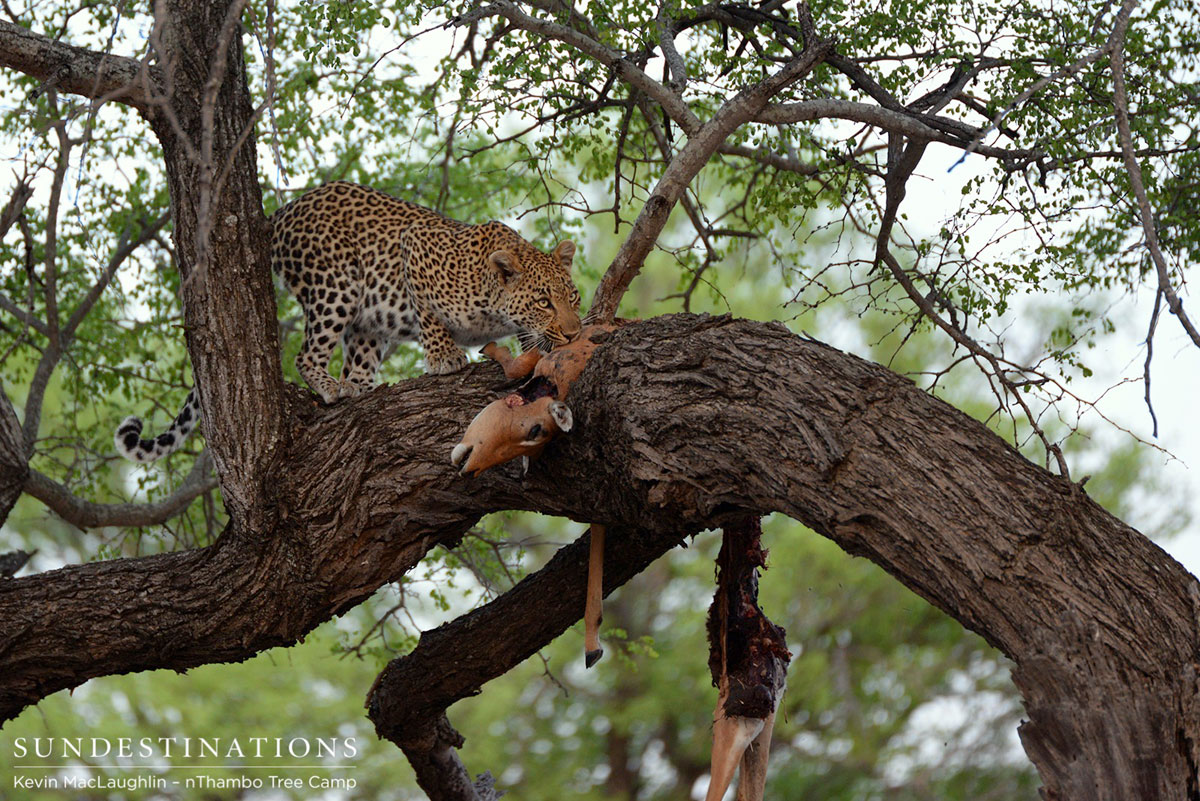
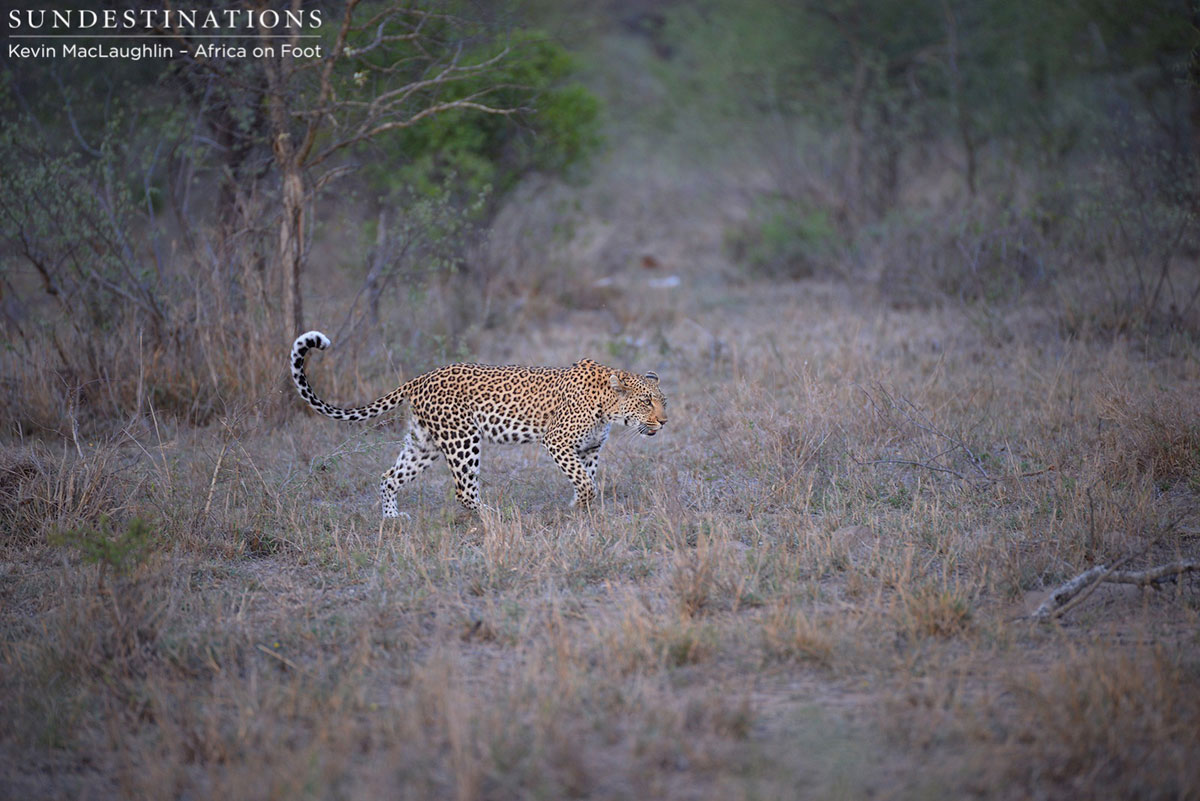
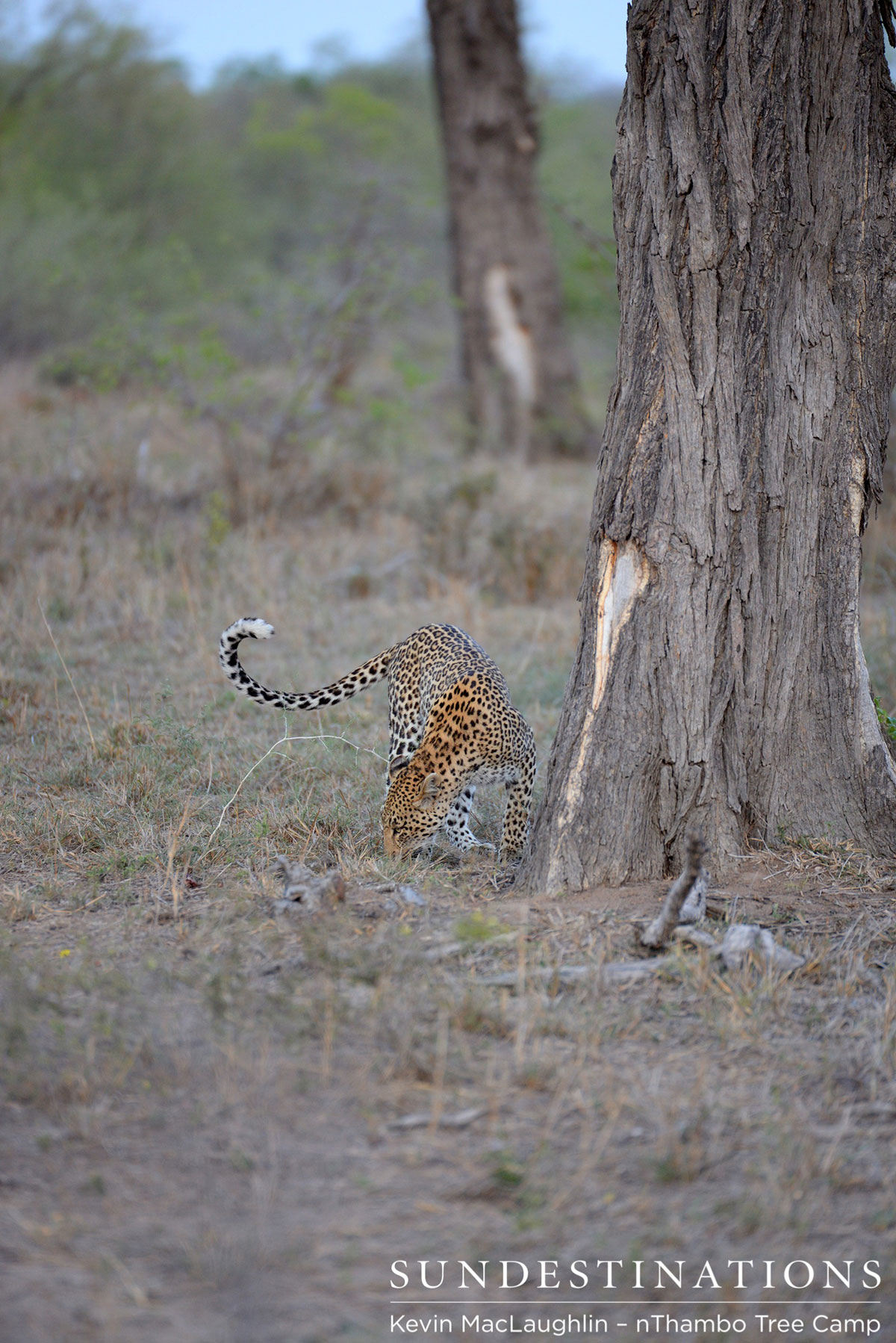
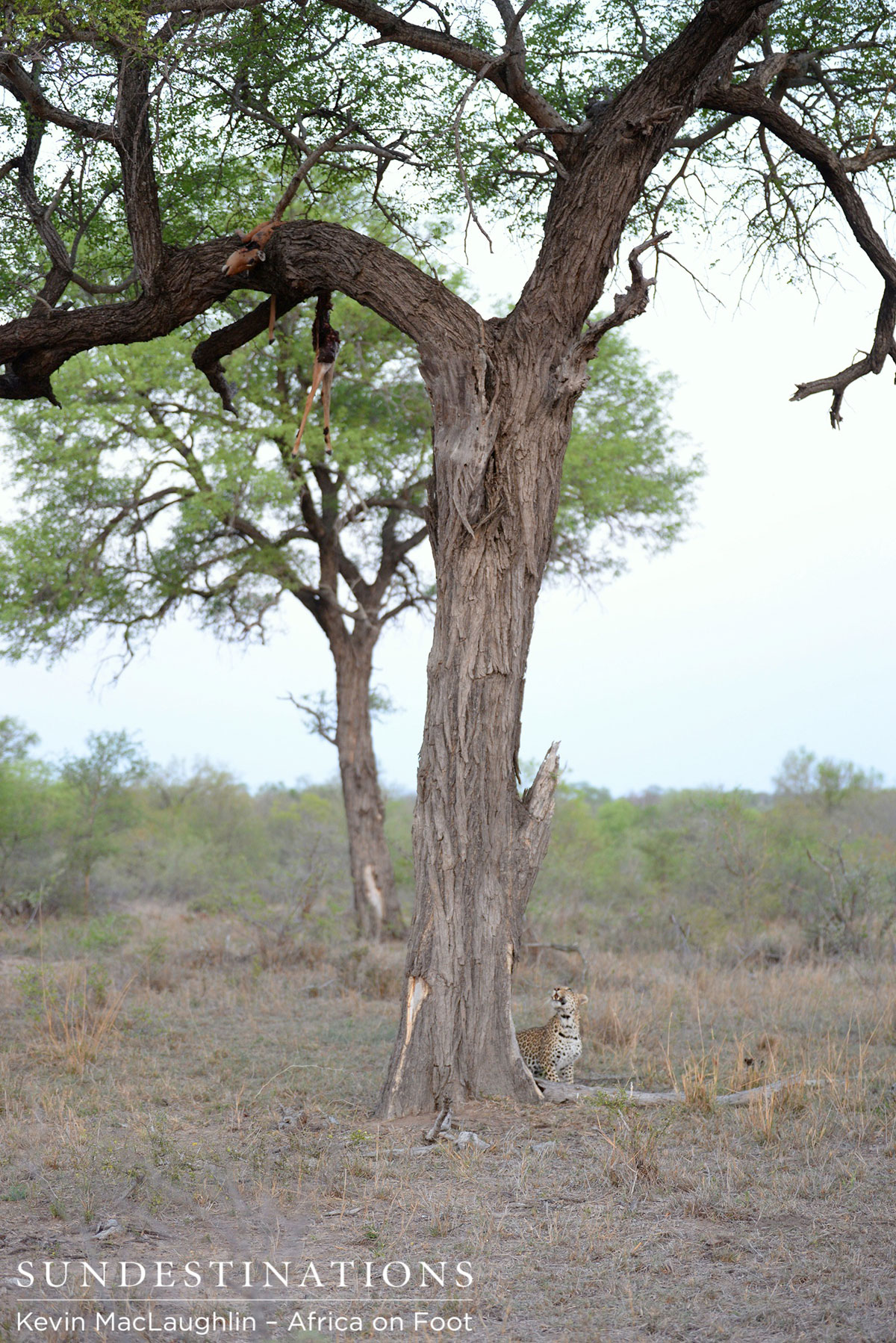
Leave a Comment